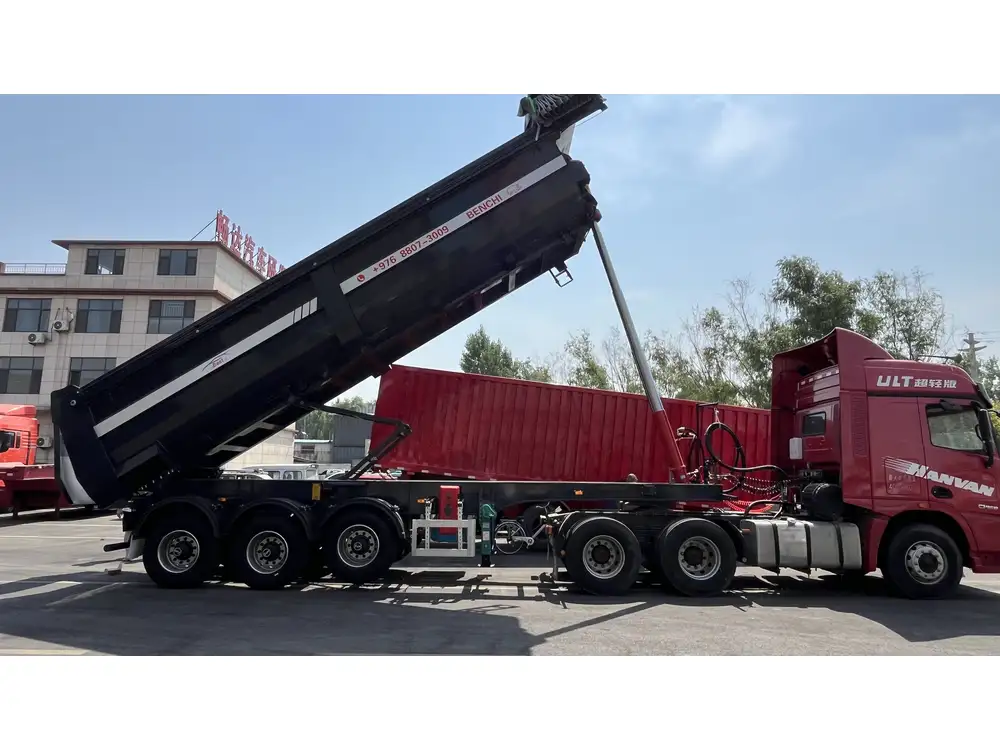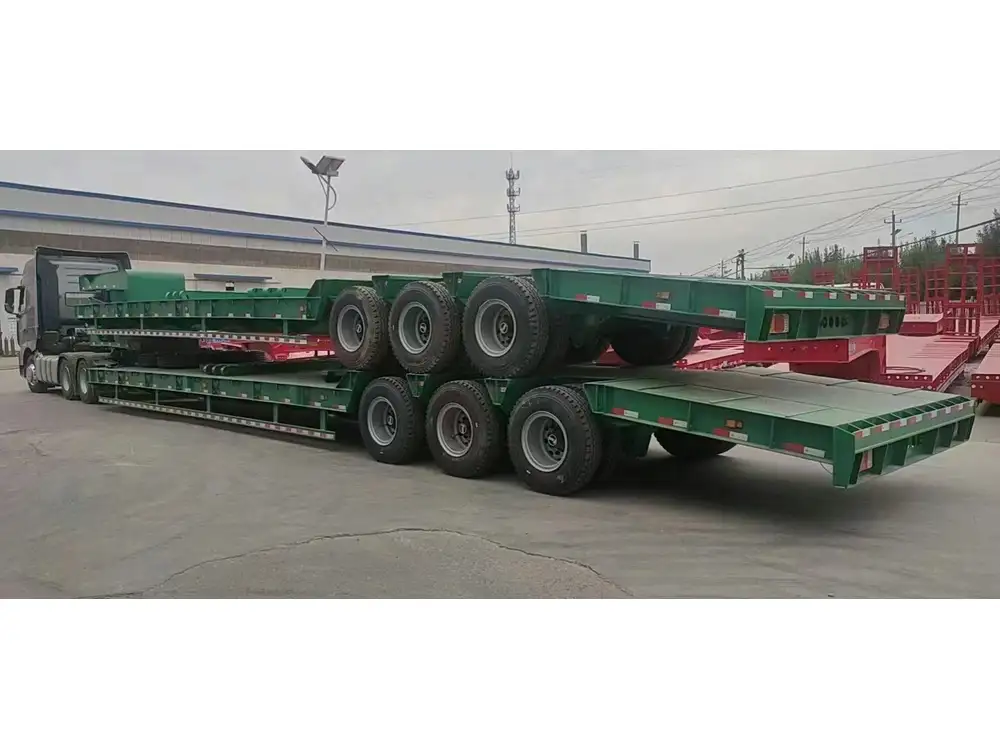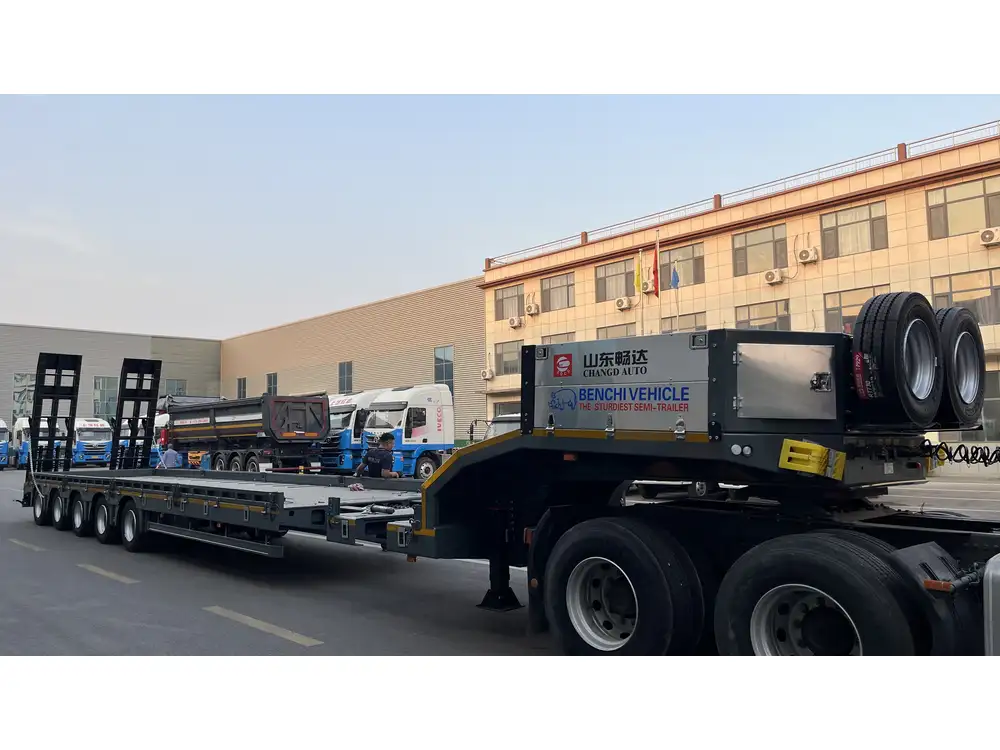Introduction to Skeletal Tipping Trailers
Skeletal tipping trailers are rapidly gaining popularity in commercial transportation and logistics due to their versatility and efficiency. As a manufacturer of semi-trailers, we recognize the importance of understanding the features and functionalities that make skeletal tipping trailers a critical asset in the haulage industry. This guide will delve deeply into the specifications, advantages, applications, and maintenance of skeletal tipping trailers, ensuring you have a comprehensive understanding to make informed purchasing or leasing decisions.
What Are Skeletal Tipping Trailers?
A skeletal tipping trailer is a specialized type of trailer designed primarily for transporting containers and bulk materials. Characteristically, these trailers are built with a robust frame that supports the weight of various loads while maintaining a lightweight design for ease of mobility. The tipping mechanism allows for the quick and efficient unloading of materials, making them an ideal choice for construction, waste management, and agricultural industries.

Key Components of Skeletal Tipping Trailers
| Component | Description |
|---|---|
| Chassis | The robust frame that provides structural integrity. |
| Tipping Mechanism | Hydraulic systems that facilitate tilting and unloading. |
| Axles | Wheels that provide mobility, typically available in various configurations. |
| Suspension System | Provides stability and comfort during transport. |
| Container Locks | Secures containers in place, ensuring safe transport. |
Benefits of Using Skeletal Tipping Trailers
Understanding the advantages of skeletal tipping trailers helps in evaluating their utility in specific industry applications. The following points highlight the significant benefits:
1. Enhanced Versatility
Skeletal tipping trailers are versatile; they can be used to transport multiple container types including flat-rack, open-top, and standard containers. Their design enables quick adjustments, accommodating various transportation needs with ease.

2. Increased Loading Efficiency
Equipped with a hydraulic tipping mechanism, these trailers facilitate faster unloading processes. This capability minimizes downtime at the delivery site, allowing for increased productivity.
3. Reduced Wear on Roads
The lightweight design of skeletal tipping trailers ensures they place less stress on road surfaces compared to heavier vehicles. This eco-friendly aspect not only reduces maintenance costs for transportation companies but also contributes to sustainability efforts.
4. Cost-Effective Operations
With reduced fuel consumption due to their lightweight nature and efficient loading systems, skeletal tipping trailers can help transport companies lower their operating costs while maximizing load capacities.

5. Enhanced Safety Features
Most modern skeletal tipping trailers come equipped with advanced safety features, including anti-lock braking systems and stability control, which significantly improve road safety during transportation.
Applications of Skeletal Tipping Trailers
1. Construction Industry
In the construction sector, skeletal tipping trailers are invaluable for transporting bulk materials such as sand, gravel, and soil. Their tipping capabilities allow for swift unloading at construction sites, streamlining the workflow.

2. Agricultural Sector
Farmers and agricultural contractors utilize skeletal tipping trailers for transporting various goods, including grains and fertilizers. Their flexibility to adjust for different container types ensures diverse agricultural needs are met efficiently.
3. Waste Management
In waste management, these trailers are crucial for transporting recyclable and non-recyclable waste materials. Their quick unloading feature is particularly beneficial in scenarios requiring immediate discharge at waste management facilities.
4. Logistics and Shipping
In logistics, skeletal tipping trailers enhance container transport across various regions. The ability to carry multiple container types optimizes logistical efficiency, contributing to shorter delivery times.

Comparing Skeletal Tipping Trailers: Key Specifications
When selecting a skeletal tipping trailer, it’s essential to compare different models based on their specifications. Here’s a comparative table highlighting critical specifications for leading models:
| Model | Load Capacity | Weight | Tipping Angle | Axles | Container Height Compatibility |
|---|---|---|---|---|---|
| Model A | 30 tons | 3,500 kg | 45° | 3 | Up to 2.6 m |
| Model B | 25 tons | 3,000 kg | 50° | 2 | Up to 2.4 m |
| Model C | 28 tons | 3,200 kg | 45° | 2 | Up to 2.5 m |
| Model D | 22 tons | 2,800 kg | 60° | 1 | Up to 2.3 m |
Maintenance Best Practices for Skeletal Tipping Trailers
Proper maintenance ensures longevity and optimal performance for skeletal tipping trailers. Here are essential maintenance practices:
1. Regular Inspections
Conduct thorough inspections on a regular basis. Check critical components such as the chassis, hydraulic systems, and tires. Look for signs of wear and tear that may affect the performance of the trailer.

2. Hydraulic System Maintenance
The hydraulic system is crucial to the tipping mechanism. Regular checks for leaks and maintenance of hydraulic fluid levels can prevent operational issues. Ensure that the hydraulic lines are clean and free from debris.
3. Brake System Checks
Conduct thorough inspections of the braking system. Ensure pads, discs, and hydraulic components are in optimal condition. Replace worn-out parts immediately to maintain safety.
4. Tires and Suspension
Regularly check tire pressure and tread depth. Unevenly worn tires can destabilize the trailer during transport. Additionally, inspect the suspension system for functionality to enhance ride comfort and stability.

5. Cleaning and Corrosion Protection
Cleaning your skeletal tipping trailer after use, especially in harsh conditions, protects it from corrosion. Apply appropriate protective coatings to the chassis to safeguard against elements and extend the lifespan.
Regulatory Compliance and Legal Considerations
Understanding regulatory compliance is vital for companies operating skeletal tipping trailers. Here are key areas to consider:
1. Weight Limits
Staying within the legal load limits for your skeletal tipping trailer is crucial to avoid hefty fines. Be familiar with local and regional weight regulations.

2. Safety Regulations
Adhering to safety regulations, including the use of reflective markings and functioning lights, enhances visibility and safety on roadways, reducing the risk of accidents.
3. Environmental Compliance
Complying with environmental regulations, especially in transporting waste or hazardous materials, is critical. Ensure that the trailer meets all local environmental legislation.
Conclusion
Skeletal tipping trailers are a compelling choice for companies looking to enhance their transportation capabilities. With their balance of strength and versatility, they offer significant operational advantages for a variety of industries—from construction to agriculture. Whether you’re considering a purchase or looking to lease, it’s imperative to assess all aspects of these phenomenal machines, including their specifications, applications, maintenance needs, and regulatory compliance.
In the dynamic world of commercial transport, choosing the right skeletal tipping trailer can dramatically affect your operational efficiency and cost-effectiveness. By staying informed and understanding the intricacies of skeletal tipping trailers, you can make data-driven decisions that ensure your company remains competitive in a fast-evolving landscape.



